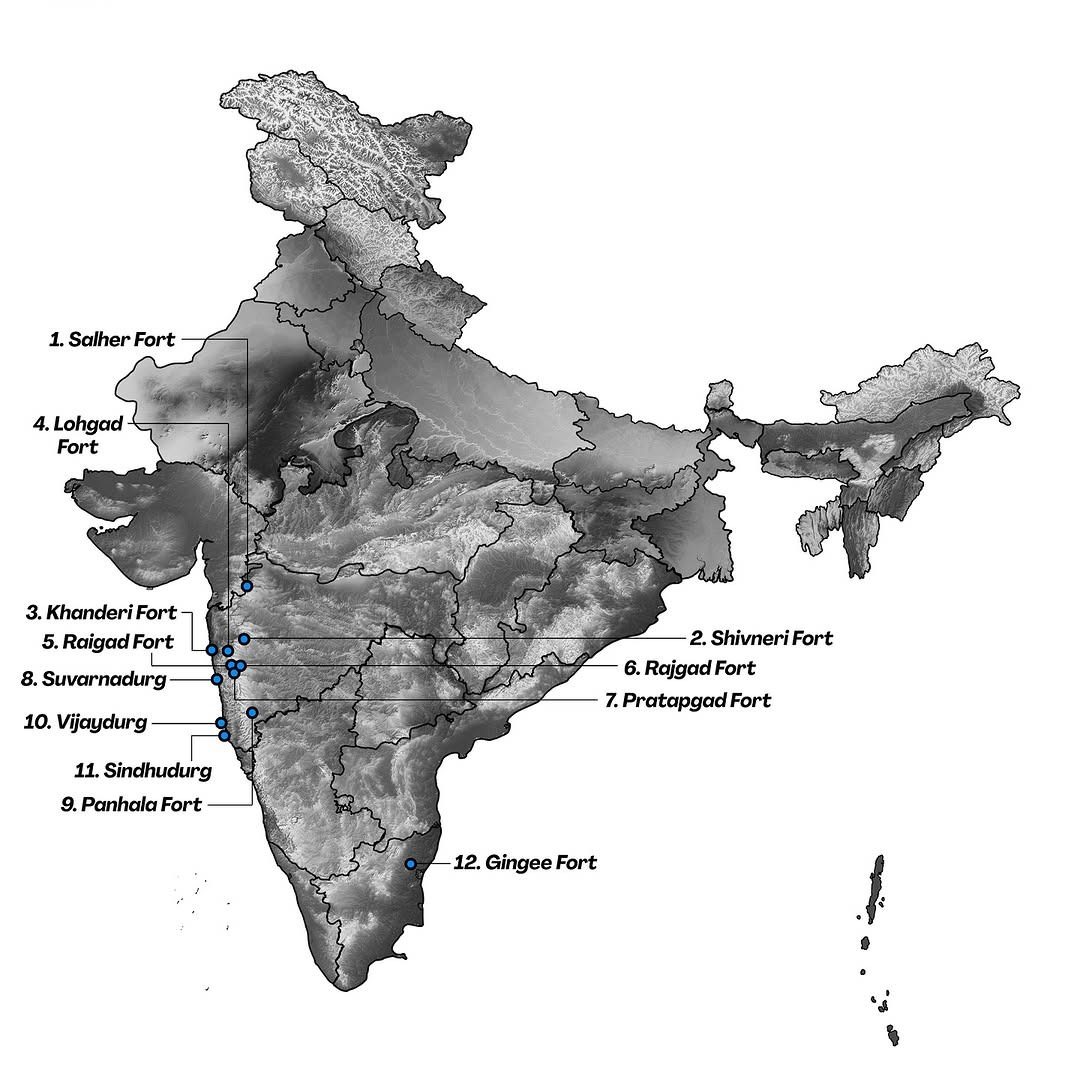Why in the News?
The ‘Maratha Military Landscapes’ of India have been inscribed on the UNESCO World Heritage List under the cultural category during the 47th session of the World Heritage Committee held in Paris.

About Maratha Military Landscapes:
- Overview: A network of 12 forts showcasing the Maratha Empire’s military architecture and strategic fortification from the 17th to 19th centuries.
- Time Period: Developed between 1670 CE (Shivaji’s era) and 1818 CE (end of Peshwa rule).
- Geographical Spread: 11 forts in Maharashtra and 1 in Tamil Nadu (Gingee Fort), covering hill, coastal, forest, plateau, and island terrains.
- Key Forts: Salher, Shivneri, Lohgad, Raigad, Rajgad, Pratapgad, Khanderi, Suvarnadurg, Panhala, Vijaydurg, Sindhudurg (Maharashtra); Gingee (Tamil Nadu).
- Types:
- Hill forts: Rajgad, Raigad
- Hill-forest: Shivneri
- Coastal: Suvarnadurg, Vijaydurg
- Island: Khanderi, Sindhudurg
- Protection:
- 8 forts by Archaeological Survey of India (ASI)
- 4 forts by Maharashtra’s Directorate of Archaeology & Museums
- Ideology: Reflects Shivaji’s military decentralization, terrain-based defense, and self-sustaining fort systems.
- Tagged under cultural criteria:
- (iii) Exceptional testimony to a cultural tradition
- (iv) Outstanding example of military architecture
- (vi) Association with historic events and traditions

What are UNESCO World Heritage Sites?
|
| [UPSC 2024] Consider the following properties included in the World Heritage List released by UNESCO:
1. Shantiniketan 2. Rani-ki-Vav 3. Sacred Ensembles of the Hoysalas 4. Mahabodhi Temple Complex at Bodhgaya How many of the above properties were included in 2023? Options: (a) Only one (b) Only two* (c) Only three (d) All four |
Get an IAS/IPS ranker as your 1: 1 personal mentor for UPSC 2024

